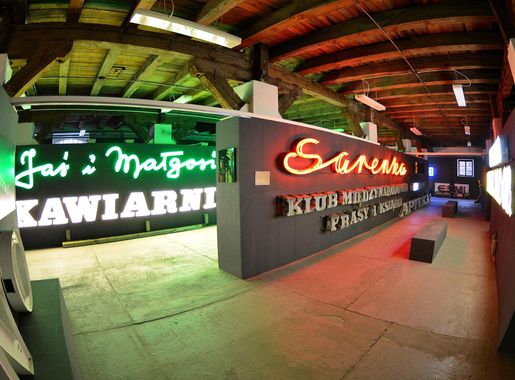
Discover the Bohemian Soul of Praga
Explore Praga: Warsaw's vibrant neighborhood where historic charm meets modern creativity, offering a rich cultural experience with art, history, and a lively nightlife.
Located on the eastern bank of the Vistula River, Praga is one of Warsaw's most intriguing neighborhoods. Once known for its rough edges, Praga has transformed into a vibrant cultural hotspot while retaining its historic charm. This area offers a unique blend of old-world character and modern creativity, making it a must-visit for any tourist exploring the Polish capital. Praga is rich in history, with many pre-war buildings that survived the devastation of World War II. Walking through its streets, you'll encounter original tenement houses, cobblestone roads, and hidden courtyards. The spirit of old Warsaw is palpable here, providing a stark contrast to the more modernized parts of the city. The neighborhood's historical significance is also highlighted by landmarks such as the Praga Cathedral and the Różycki Bazaar, which dates back to the 19th century. Art and culture thrive in Praga, with numerous galleries, murals, and creative spaces scattered across the area. The Soho Factory and the Neon Museum are prime examples of how this neighborhood has embraced its artistic side. This creative energy extends to its nightlife, with an array of bars, clubs, and live music venues that offer a taste of Warsaw's eclectic scene. Praga’s culinary scene is also not to be missed, with a variety of eateries ranging from traditional Polish restaurants to hip cafes and international cuisine.
Local tips in Praga
- Visit the Neon Museum to see a unique collection of neon signs from the Cold War era.
- Take a guided walking tour to learn about Praga’s history and discover hidden gems.
- Explore the Różycki Bazaar for a taste of local life and traditional Polish goods.
- Enjoy a night out at one of Praga’s many live music venues for an authentic Warsaw experience.
- Check out the street art and murals that give Praga its distinctive bohemian flair.
Discover the Bohemian Soul of Praga
Located on the eastern bank of the Vistula River, Praga is one of Warsaw's most intriguing neighborhoods. Once known for its rough edges, Praga has transformed into a vibrant cultural hotspot while retaining its historic charm. This area offers a unique blend of old-world character and modern creativity, making it a must-visit for any tourist exploring the Polish capital. Praga is rich in history, with many pre-war buildings that survived the devastation of World War II. Walking through its streets, you'll encounter original tenement houses, cobblestone roads, and hidden courtyards. The spirit of old Warsaw is palpable here, providing a stark contrast to the more modernized parts of the city. The neighborhood's historical significance is also highlighted by landmarks such as the Praga Cathedral and the Różycki Bazaar, which dates back to the 19th century. Art and culture thrive in Praga, with numerous galleries, murals, and creative spaces scattered across the area. The Soho Factory and the Neon Museum are prime examples of how this neighborhood has embraced its artistic side. This creative energy extends to its nightlife, with an array of bars, clubs, and live music venues that offer a taste of Warsaw's eclectic scene. Praga’s culinary scene is also not to be missed, with a variety of eateries ranging from traditional Polish restaurants to hip cafes and international cuisine.
Iconic landmarks you can’t miss
The Royal Castle in Warsaw
Discover the majestic Royal Castle in Warsaw, an iconic symbol of Polish heritage featuring stunning architecture and rich historical narratives.
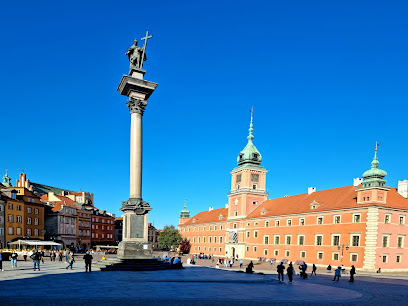
Warsaw Barbican
Explore the Warsaw Barbican, a historical landmark that blends medieval architecture with vibrant city life, showcasing Warsaw's rich cultural heritage.

Park Praski
Explore the lush landscapes and vibrant culture of Park Praski, a must-visit urban oasis in Warsaw's historic Praga Północ district.
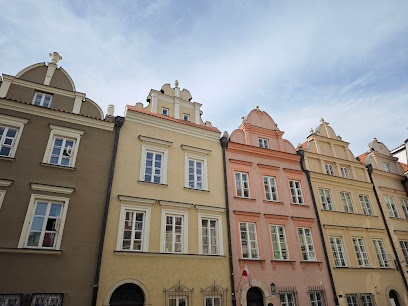
Muzeum Polskiej Wódki
Explore the captivating history and cultural significance of Polish vodka at Muzeum Polskiej Wódki in Warsaw's vibrant Praga Północ district.
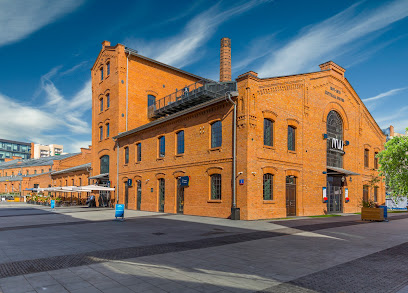
Cathedral of St. Michael the Archangel and St. Florian the Martyr
Discover the architectural beauty and spiritual depth of the Cathedral of St. Michael the Archangel and St. Florian the Martyr in Warsaw's Praga Północ district.
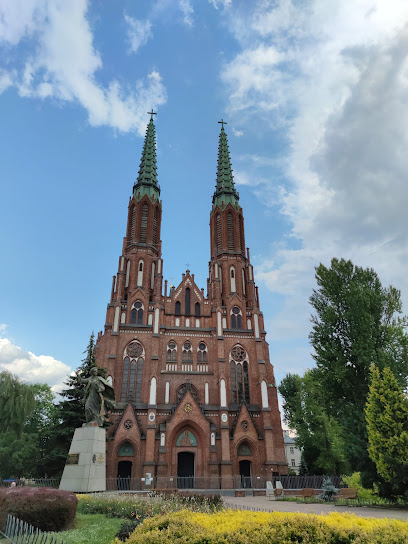
Muzeum Warszawskiej Pragi
Explore the rich cultural history of Warsaw's Praga district at Muzeum Warszawskiej Pragi, a local history museum filled with unique stories and engaging exhibits.
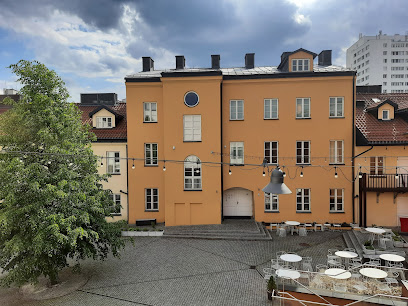
Kościuszko Infantry Division Memorial
Explore the Kościuszko Infantry Division Memorial in Warsaw, a solemn tribute to Polish bravery during World War II, nestled in the historic Praga Północ district.
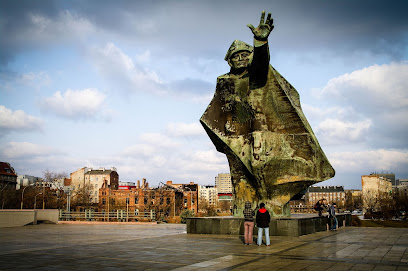
Monument to the Fallen and Murdered in the East
Explore the Monument to the Fallen and Murdered in the East in Warsaw, a powerful war memorial honoring resilience and remembrance.
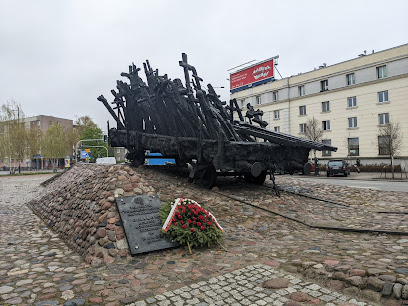
Centro Historico
Explore the enchanting Centro Historico in Warsaw, a UNESCO World Heritage site brimming with history, culture, and stunning architecture.
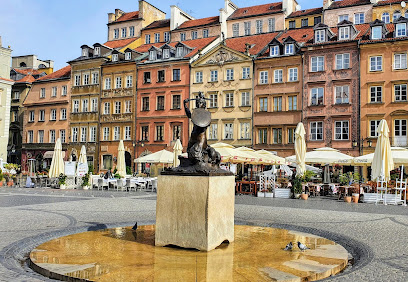
Grajków Monument
Explore the Grajków Monument in Warsaw, a symbol of resilience and a reflection of the rich history of Praga Północ, ideal for cultural enthusiasts.
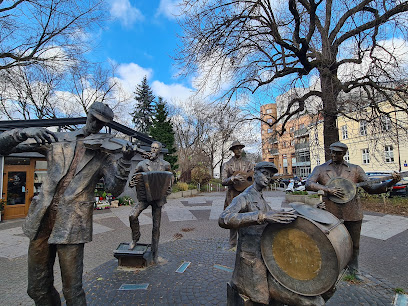
Pomnik Praskiej Kapeli Podwórkowej
Discover the charm of Praga Południe at the Pomnik Praskiej Kapeli Podwórkowej, a tribute to Warsaw's vibrant street music culture.
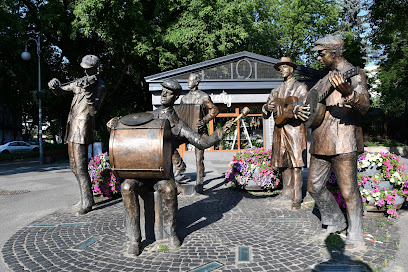
Viewpoint of Śródmieście
Experience the stunning panoramic views of Warsaw from the Śródmieście Viewpoint, a must-see destination for all travelers.
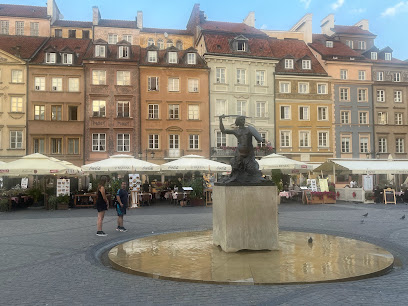
Tablica pamięci uczestników akcji Kutschera
Explore the poignant Memorial to the Participants of the Kutschera Action in Warsaw, a significant historical landmark honoring courageous resistance during WWII.

Solidarności Monument
Explore the Solidarności Monument in Warsaw, a powerful symbol of freedom and the human spirit, reflecting Poland's rich history of resilience and unity.
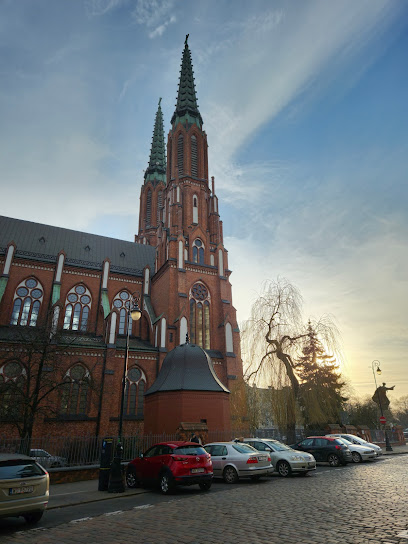
Ślady odłamków pocisku artyleryjskiego
Explore the Shell Fragment Museum in Warsaw for a captivating journey through Poland's military history and the impact of war on society.
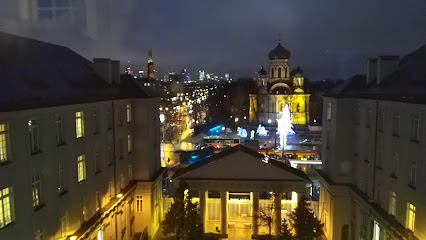
Unmissable attractions to see
Łazienki Królewskie
Explore the exquisite Łazienki Królewskie, Warsaw’s royal park featuring stunning gardens, historical monuments, and vibrant cultural events in a serene setting.
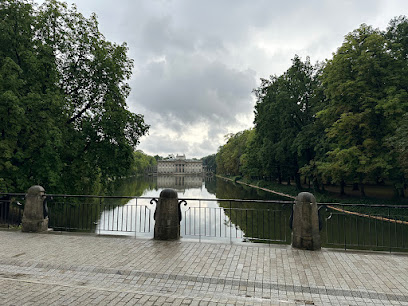
Copernicus Science Centre
Discover the universe’s secrets at the Copernicus Science Centre in Warsaw, an interactive science museum for curious minds of all ages.
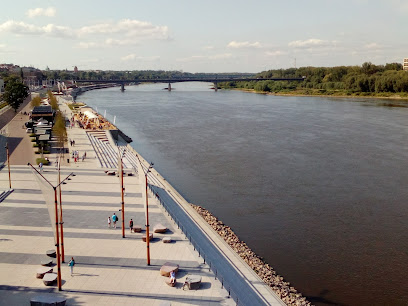
City Zoological Garden in Warsaw
Discover the City Zoological Garden in Warsaw, home to diverse species and a commitment to conservation in a beautiful urban setting.
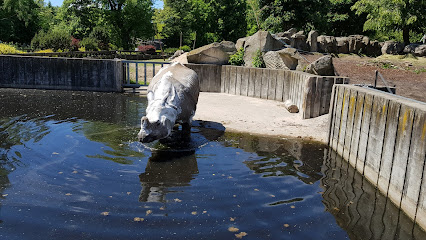
The Warsaw Rising Museum
Explore the Warsaw Rising Museum, a powerful tribute to the bravery of the Polish resistance and an insightful journey into the heart of Warsaw's history.
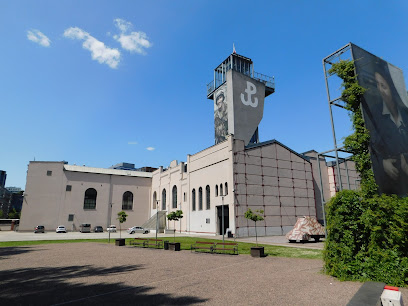
Skaryszewski Park in the name of Ignacy Jan Paderewski
Explore the lush landscapes of Skaryszewski Park, a serene escape in Warsaw, perfect for leisurely walks, picnics, and cultural festivities.
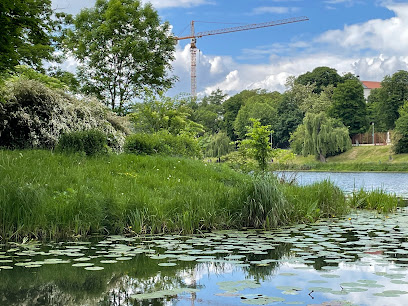
Warsaw Barbican
Explore the Warsaw Barbican, a stunning historical landmark showcasing the city’s medieval architecture and rich history.
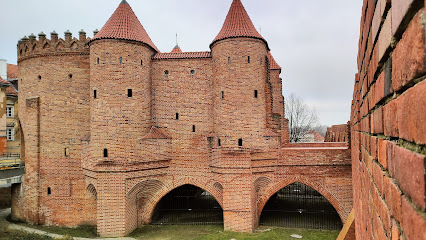
Park Praski
Explore the lush landscapes and vibrant atmosphere of Park Praski, a serene oasis in the heart of Warsaw, perfect for relaxation and family fun.
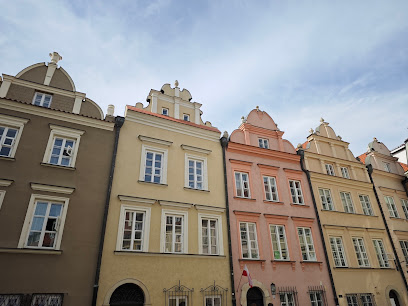
Park Znicza
Explore the tranquil beauty of Park Znicza, a green oasis in Warsaw's Praga Południe district, perfect for relaxation and outdoor activities.
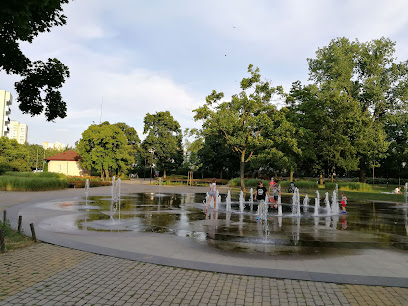
Neon Museum
Discover the vibrant history of neon art in Warsaw's Neon Museum, showcasing a striking collection of illuminated signs and their cultural significance.
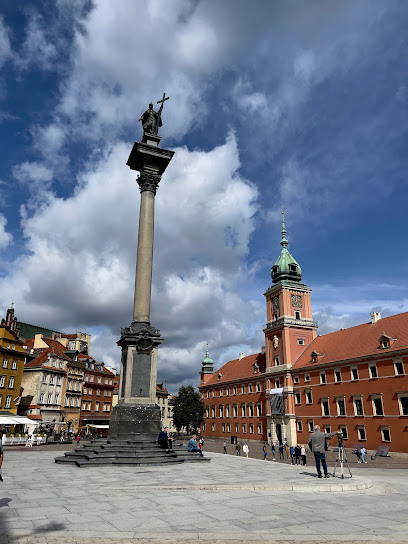
Muzeum Warszawskiej Pragi
Explore the vibrant history and culture of Warsaw's Praga district at Muzeum Warszawskiej Pragi, a must-visit local history museum and event venue.

Park im. płk. Jana Szypowskiego „Leśnika”
Explore the natural beauty and tranquility of Park im. płk. Jana Szypowskiego ‘Leśnika’, an idyllic retreat in Warsaw perfect for relaxation and recreation.
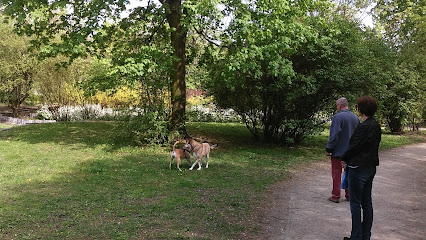
Ostroga regulacyjna Boruta
Discover the serene beauty and historical significance of Ostroga Regulacyjna Boruta, a captivating tourist destination along the Vistula River in Warsaw.
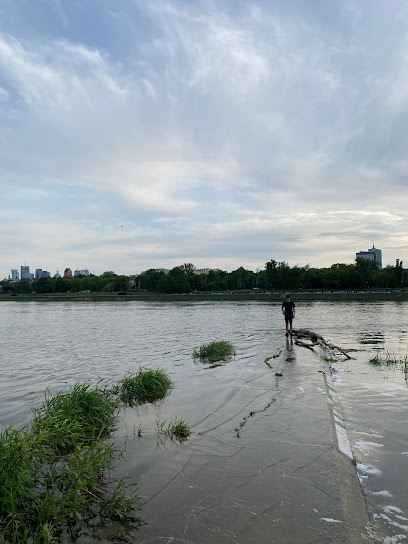
Solidarności Monument
Explore the Solidarności Monument in Warsaw, a powerful tribute to the fight for freedom and resilience of the Polish people.
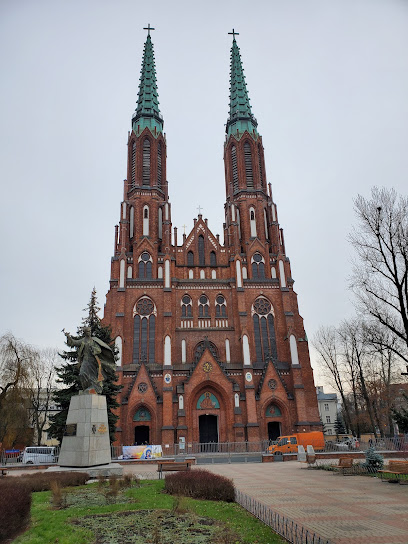
Rzeźba w bramie
Explore Rzeźba w Bramie in Warsaw, a captivating tourist attraction showcasing stunning sculptures and the vibrant local culture of Praga Północ.
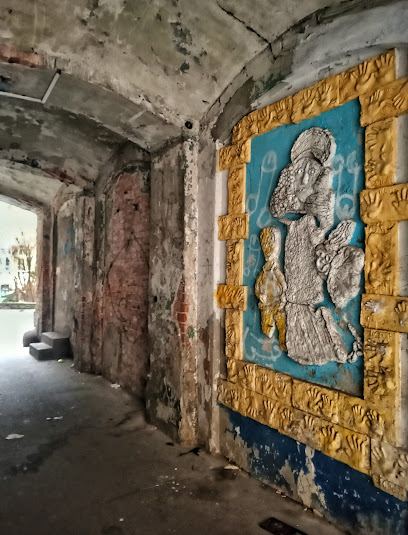
Praski Aniołek
Explore Praski Aniołek, a cultural gem in Praga Północ, offering a vibrant mix of art, history, and local charm in the heart of Warsaw.
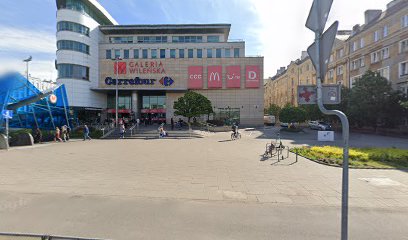
Essential places to dine
Pyzy Flaki Gorące
Discover authentic Polish cuisine at Pyzy Flaki Gorące—home of delicious dumplings and hearty soups in the heart of Warsaw.
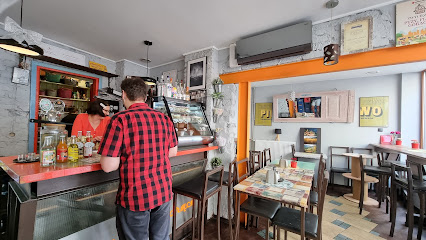
Boska Praga
Discover the essence of Polish cuisine at Boska Praga - where tradition meets modernity in a charming setting.
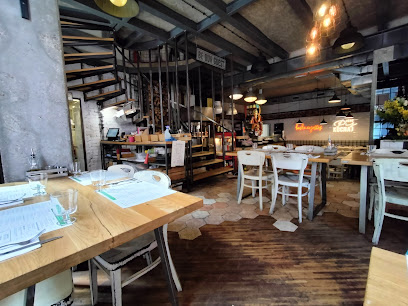
Le Cedre 61
Experience authentic Lebanese cuisine at Le Cedre 61 in Warsaw - where every dish tells a story of flavor and tradition.
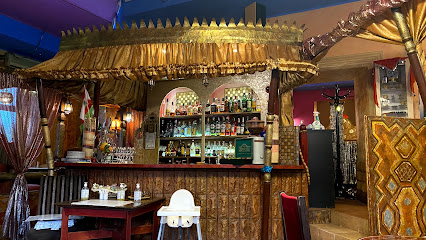
Praski Butcher grill&wine
Experience the best grilled meats and exquisite wines at Praski Butcher Grill & Wine in Warsaw's vibrant Praga Północ district.
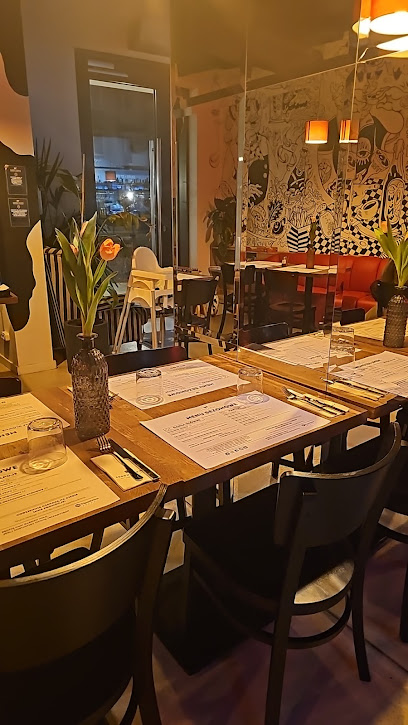
Restauracja Źródło
Experience authentic Polish cuisine at Restauracja Źródło in Praga Północ, where tradition meets modern culinary artistry.
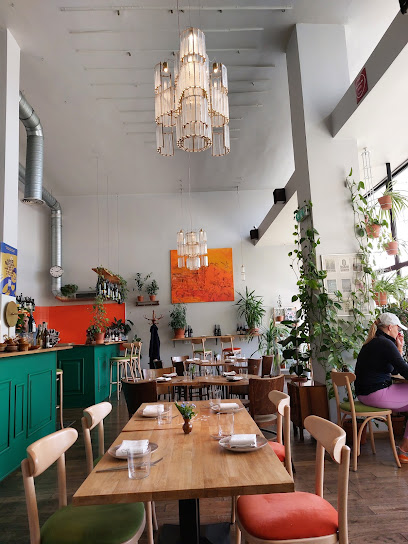
Coś Na Ząbkowskiej
Discover the flavors of Poland at Coś Na Ząbkowskiej, where traditional cuisine meets modern flair in Warsaw's artistic heart.
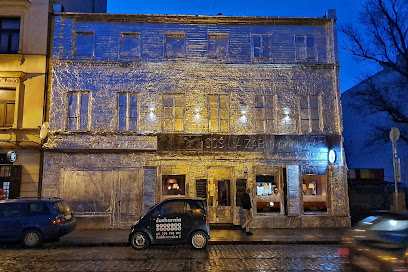
Boska Rano i Wieczorem
Experience culinary delights at Boska Rano i Wieczorem, where traditional Polish flavors meet modern bistro vibes in Warsaw's Praga Północ.
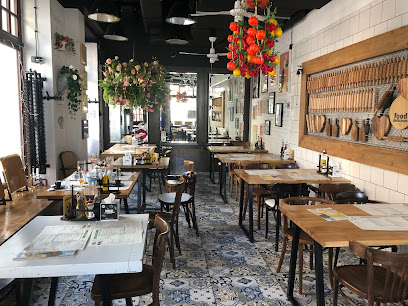
PragaTu
Experience authentic Polish cuisine at PragaTu – where tradition meets modernity in Warsaw's vibrant Praga Północ district.
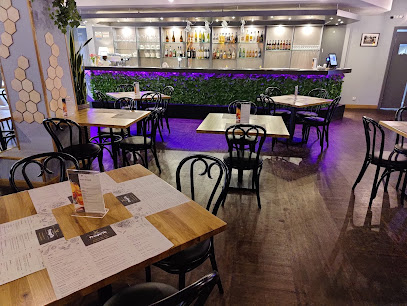
hub.praga
Experience the vibrant flavors of Poland at hub.praga – where tradition meets innovation in every bite.
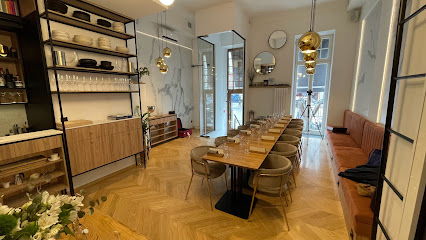
Praska Gazela
Experience authentic Polish cuisine in Praga Północ at Praska Gazela - where tradition meets flavor in every dish.
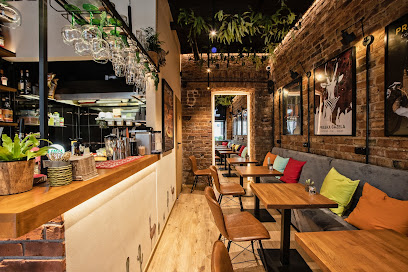
Markets, malls and hidden boutiques
Galeria Wileńska
Discover Galeria Wileńska in Warsaw - a vibrant shopping destination with diverse stores, delightful dining, and engaging entertainment options.
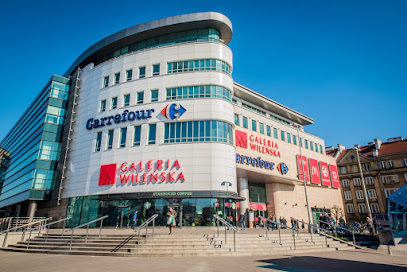
NEW YORKER
Explore a vibrant collection of clothing and accessories for every style at NEW YORKER in Warsaw's Galeria Wilenska.
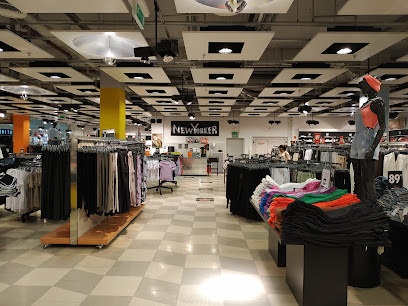
Flying Tiger Copenhagen
Explore the vibrant and quirky world of Flying Tiger Copenhagen in Warsaw, where unique gifts and playful surprises await every visitor.

Look Inside - starocie i antyki
Uncover a world of unique antiques and vintage treasures at Look Inside, the charming antique store in Warsaw's historic Praga Północ district.
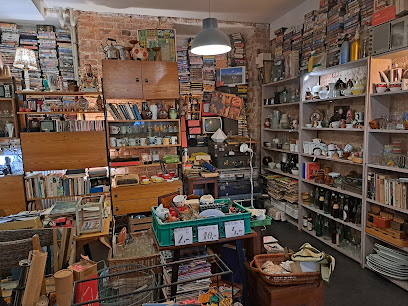
RADHASHOP
Discover RADHASHOP in Warsaw: Your Destination for Unique Oriental Goods, Clothing, Jewelry, and Memorable Souvenirs.
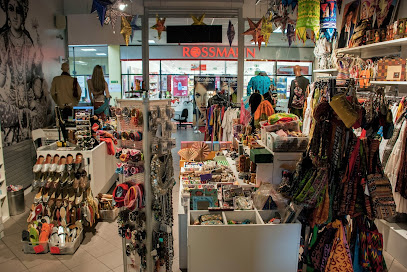
Sklep INDIGO
Explore the vibrant culture of Warsaw at Sklep INDIGO, a store brimming with unique local goods and authentic Polish souvenirs.
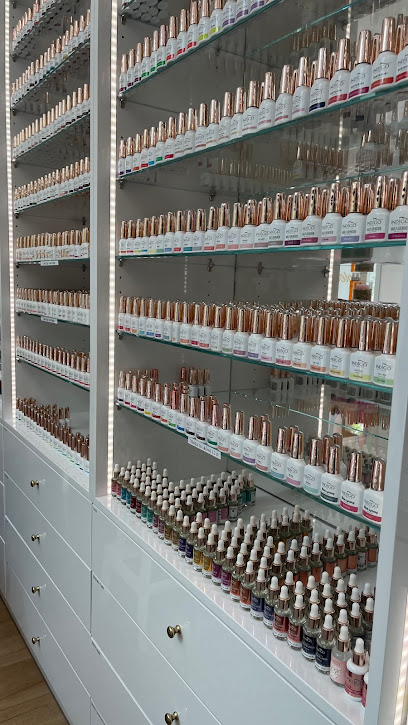
IYA Fashion Outlet
Shop stylish and affordable clothing at IYA Fashion Outlet in Warsaw's Praga Północ, where fantastic fashion meets unbeatable prices.
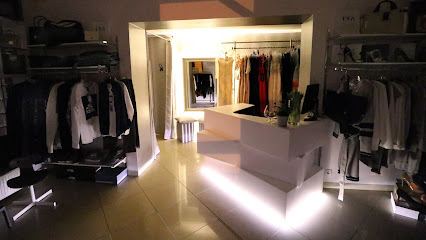
Handmade Adventures
Explore the charm of Handmade Adventures in Warsaw, a gift shop showcasing exquisite handcrafted treasures from local artisans.
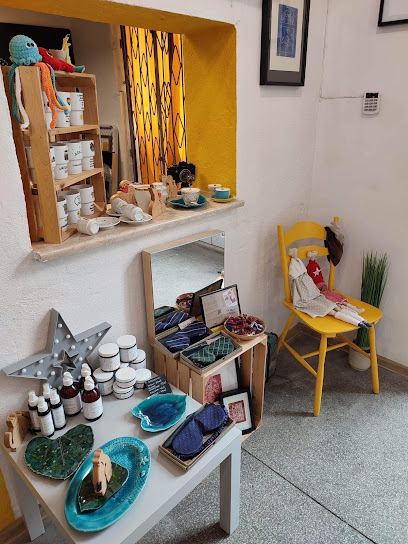
Super Prezenty Wileńska
Explore Super Prezenty Wileńska, your ultimate gift shop destination in Warsaw for unique souvenirs, local crafts, and personalized treasures.
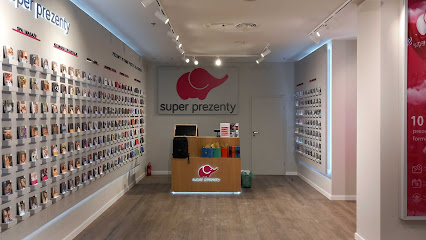
Polish Design Koneser
Explore the heart of Polish creativity at Polish Design Koneser, where unique handcrafted designs await in a vibrant cultural setting.

Essential bars & hidden hideouts
W Oparach Absurdu.
Explore W Oparach Absurdu in Warsaw: a unique pub blending delicious dumplings, live music, and a vibrant cultural atmosphere.
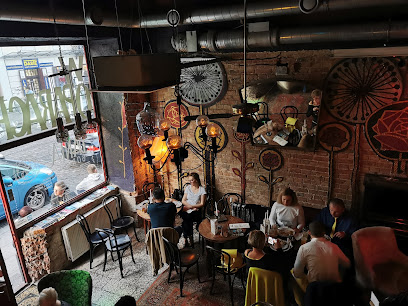
Centrum Zarządzania Światem
Discover the cozy charm of Centrum Zarządzania Światem, where Polish cuisine meets café culture in the heart of Warsaw.
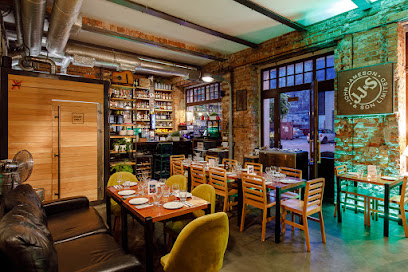
Bazar bistro klub sklep
Discover Bazar Bistro Klub in Warsaw: where delightful breakfasts meet vibrant nightlife in a trendy gastropub atmosphere.
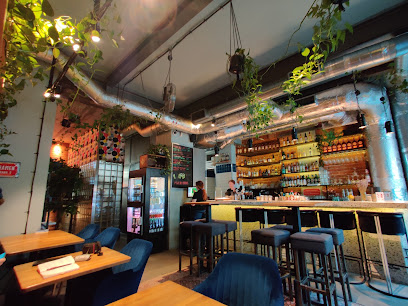
La Playa Music Bar
Discover the vibrant atmosphere of La Playa Music Bar, a top nightlife destination in Warsaw with live music, refreshing drinks, and beach-themed fun.
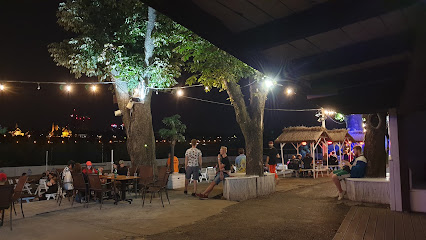
Łysy Pingwin
Discover the artistic fusion of craft beers and culinary delights at Łysy Pingwin in Warsaw's vibrant Praga Północ district.
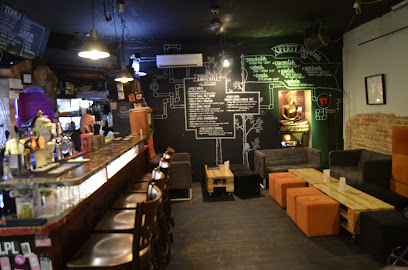
BarBazaar
Experience the vibrant atmosphere and mouth-watering grilled dishes at BarBazaar, a culinary hotspot in Warsaw's Praga Północ.
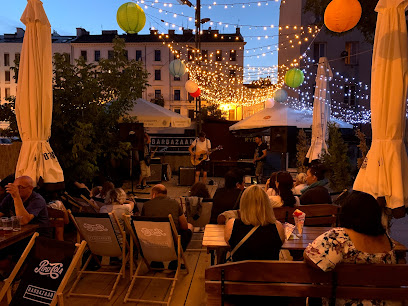
Beer Station Praga
Discover the heart of Warsaw's nightlife at Beer Station Praga, where craft beers, delicious food, and live entertainment await.
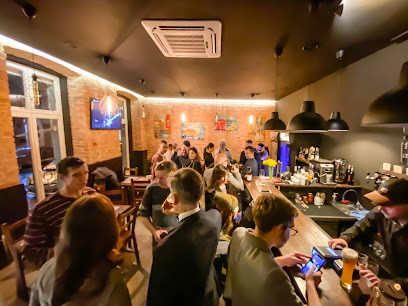
3/4 Koneser Bar
Discover the vibrant nightlife at 3/4 Koneser Bar, where expertly crafted cocktails meet an energetic atmosphere in Warsaw’s Praga Północ.
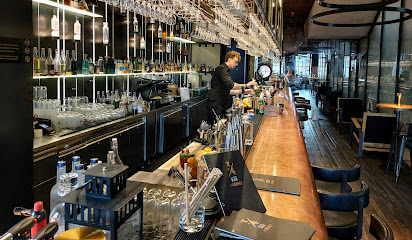
Bar 24h Moxy Warsaw Praga
Discover the lively ambiance of Bar 24h Moxy Warsaw Praga, where comfort meets excitement in the heart of Praga Północ.
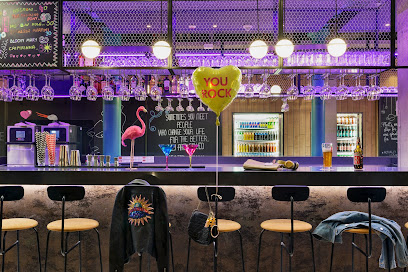
White Crow Craft Beer&Kitchen
Discover Warsaw's craft beer scene at White Crow Craft Beer & Kitchen, where quality brews and a cozy atmosphere await every visitor.
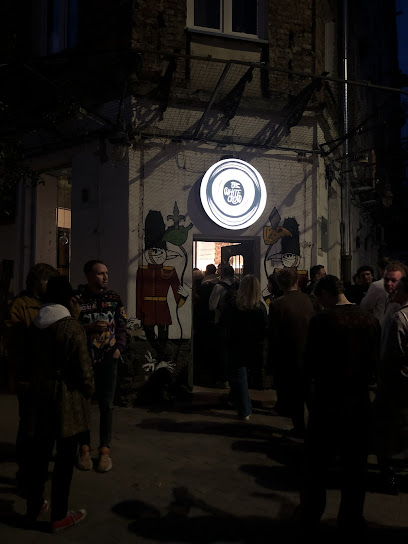
Local Phrases
-
- HelloCześć
[cheh-shch] - GoodbyeDo widzenia
[doh veed-zen-ya] - YesTak
[tahk] - NoNie
[nyeh] - Please/You're welcomeProszę
[pro-sheh] - Thank youDziękuję
[jen-koo-yeh] - Excuse me/SorryPrzepraszam
[psheh-prah-sham] - How are you?Jak się masz?
[yak shyeh mah-sh] - Fine. And you?Dobrze. A ty?
[dob-zheh. ah tih] - Do you speak English?Czy mówisz po angielsku?
[chi moo-veesh poh ahn-gyehl-skoo] - I don't understandNie rozumiem
[nyeh roh-zoo-myem]
- HelloCześć
-
- I'd like to see the menu, pleaseChciałbym zobaczyć menu, proszę
[h-chyawbim zoh-bah-chich meh-noo, pro-sheh] - I don't eat meatNie jem mięsa
[nyeh yem myen-sah] - Cheers!Na zdrowie!
[nah zdroh-vee-eh] - I would like to pay, pleaseChciałbym zapłacić, proszę
[h-chyawbim zah-plah-cheech, pro-sheh]
- I'd like to see the menu, pleaseChciałbym zobaczyć menu, proszę
-
- Help!Pomocy!
[poh-moh-tsi] - Go away!Idź precz!
[eej prech] - Call the Police!Zadzwoń po policję!
[zahd-vohn poh poh-leet-syeh] - Call a doctor!Zadzwoń po doktora!
[zahd-vohn poh dohk-toh-rah] - I'm lostZgubiłam się
[zgoo-bee-wam shyeh] - I'm illJestem chory/a
[yeh-stem hoh-ri/ah]
- Help!Pomocy!
-
- I'd like to buy...Chciałbym kupić...
[h-chyawbim koo-peech] - I'm just lookingTylko się rozglądam
[tih-koh shyeh rohz-gwah-dahm] - How much is it?Ile to kosztuje?
[ee-leh toh kohs-too-yeh] - That's too expensiveTo jest za drogie
[toh yest zah droh-gyeh] - Can you lower the price?Czy możesz obniżyć cenę?
[chi moo-zhes ohb-nee-zhoo chen-eh]
- I'd like to buy...Chciałbym kupić...
-
- What time is it?Która jest godzina?
[ktoo-rah yest goh-dzee-nah] - It's one o'clockJest pierwsza
[yest pyehr-vshah] - Half past (10)Pół do dziesiątej
[poow doh dzyeh-shont-ehy] - MorningRano
[rah-noh] - AfternoonPopołudnie
[poh-poo-wood-nyeh] - EveningWieczór
[vyeh-choor] - YesterdayWczoraj
[v-chorai] - TodayDziś
[jeesh] - TomorrowJutro
[yoo-tro] - 1Jeden
[yeh-den] - 2Dwa
[dvah] - 3Trzy
[tshih] - 4Cztery
[ch-teh-ri] - 5Pięć
[pyehnch] - 6Sześć
[sheshch] - 7Siedem
[syeh-dem] - 8Osiem
[oh-shyem] - 9Dziewięć
[dzyev-nyehch] - 10Dziesięć
[dzyeh-shont-ehch]
- What time is it?Która jest godzina?
-
- Where's a/the...?Gdzie jest...
[gdyeh yest] - What's the address?Jaki jest adres?
[yah-ki yest ah-dresh] - Can you show me (on the map)?Czy możesz mi pokazać (na mapie)?
[chi moo-zhes mee poh-kah-zahts (nah mah-pee-eh)] - When's the next (bus)?Kiedy jest następny (autobus)?
[kieh-deh yest nah-stehp-ny (ow-toh-boos)] - A ticket (to ....)Bilet (do ....)
[bee-let (doh)]
- Where's a/the...?Gdzie jest...
History of Praga
-
Praga's history dates back to the 12th century when it was founded as a settlement on the eastern bank of the Vistula River. Originally part of the Kingdom of Poland, Praga grew as a separate entity from Warsaw, developing its own distinct identity. It was primarily an agricultural area, but by the 19th century, it began to urbanize, attracting workers and small industries.
-
The 19th century marked a significant transformation for Praga as it became an industrial hub. Factories, breweries, and workshops proliferated, fueled by the influx of workers. The establishment of the railway in the mid-1800s connected Praga more closely with Warsaw, allowing for greater economic opportunities and mobility. This period also saw the construction of notable architectural landmarks, including the iconic St. Florian's Cathedral.
-
During World War II, Praga experienced both devastation and resilience. The neighborhood was largely spared from the destruction that befell central Warsaw during the Warsaw Uprising in 1944, as the Germans focused their military efforts on the city center. However, the war left a profound impact on its population and infrastructure. Many residents faced hardships, and the area became a refuge for those fleeing the violence.
-
In the aftermath of the war, Praga underwent significant reconstruction. The Soviet influence led to the development of new residential complexes and public utilities. Despite these changes, Praga retained much of its historical character, with pre-war buildings and a unique local culture persisting. The area became known for its artistic communities, contributing to a vibrant cultural scene that included galleries, theaters, and music venues.
-
In recent years, Praga has experienced a cultural renaissance, emerging as a trendy destination for artists, musicians, and young professionals. The revitalization of old factories into creative spaces and the establishment of cultural events, such as street art festivals and film screenings, have transformed the neighborhood. Praga's unique blend of historic charm and modern creativity continues to attract visitors, reinforcing its status as a culturally significant part of Warsaw.
Praga Essentials
-
Praga can be easily accessed from central Warsaw via public transportation. The easiest option is to take the tram number 3, 6, or 8 from the city center, which will take you directly into Praga. Alternatively, you can take a train from Warszawa Centralna station to Warszawa Wileńska station, which is in close proximity to Praga. Buses are also available, with several lines connecting Praga to other neighborhoods.
-
Praga is well-served by public transport, including trams and buses. The tram network is efficient, with several lines running through the area. You can also rent bicycles through the Veturilo bike-sharing system, which has stations throughout Warsaw, including Praga. Walking is another great way to explore the neighborhood, especially along the Vistula Boulevards.
-
Praga is generally safe for tourists, but it is wise to remain vigilant, especially at night. Areas around the tracks and some street corners may experience higher crime rates, including petty theft and pickpocketing. It is advisable to avoid isolated areas after dark and to keep an eye on your belongings in crowded spaces.
-
In case of an emergency, dial 112 for police, fire, or medical assistance in Poland. It is advisable to have travel insurance that covers emergencies. Local hospitals and clinics are available, and pharmacies are common for minor health concerns. Always carry a copy of your ID or passport in case you need to prove your identity.
-
Fashion: Do wear comfortable shoes for walking, and dress modestly when visiting places of worship. Avoid overly casual attire. Religion: Do respect local customs, especially in churches and synagogues. Public Transport: Do keep your ticket until the end of your journey. Don’t engage in loud conversations or consume food and drinks on public transport. Greetings: Do greet locals with a friendly 'Dzień dobry' (Good morning/afternoon). Don’t assume everyone speaks English; learn a few basic Polish phrases. Eating & Drinking: Do try local dishes at local eateries. Don’t drink tap water unless it's confirmed safe, and avoid excessive public displays of affection.
-
To experience Praga like a local, visit the vibrant bazaars and artisan shops where you can find handmade crafts and local delicacies. Try the street food, especially at the weekend markets. Engage with local artists and musicians who often perform in the parks and public spaces. For an authentic experience, explore the murals and street art that adorn many buildings in Praga, reflecting the neighborhood's rich cultural history.
-
Poles are generally warm and hospitable. When visiting someone's home, it is customary to bring a small gift, such as flowers or sweets. Be mindful of local traditions, especially during religious holidays. It's polite to say 'Smacznego' (Enjoy your meal) before starting to eat. When dining out, leaving a tip of around 10% is appreciated, but check if service is included.
-
Praga is known for its rich history and unique architecture, with many buildings dating back to before World War II. Take time to visit the area's museums, such as the Museum of Praga and the Neon Museum, to understand the local culture and history better. Walking tours are available, which can provide deeper insights into the neighborhood's past and its transformation over the years.
Trending Landmarks in Praga
-
The Royal Castle in Warsaw
-
Warsaw Barbican
-
Park Praski
-
Muzeum Polskiej Wódki
-
Cathedral of St. Michael the Archangel and St. Florian the Martyr
-
Muzeum Warszawskiej Pragi
-
Kościuszko Infantry Division Memorial
-
Monument to the Fallen and Murdered in the East
-
Centro Historico
-
Grajków Monument
-
Pomnik Praskiej Kapeli Podwórkowej
-
Viewpoint of Śródmieście
-
Tablica pamięci uczestników akcji Kutschera
-
Solidarności Monument
-
Ślady odłamków pocisku artyleryjskiego
Nearby Cities to Praga
-
Things To Do in Radom
-
Things To Do in Lodz
-
Things To Do in Lublin
-
Things To Do in Kielce
-
Things To Do in Olsztyn
-
Things To Do in Bialystok
-
Things To Do in Torun
-
Things To Do in Czestochowa
-
Things To Do in Bydgoszcz
-
Things To Do in Elblag
-
Things To Do in Suwalki
-
Things To Do in Tarnow
-
Things To Do in Krakow
-
Things To Do in Rzeszow
-
Things To Do in Gliwice



